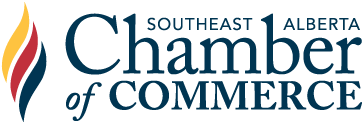Higher Standards for Animal Welfare

Higher Standards for Animal Welfare
Agriculture - Provincial Policy
Issue
In the agricultural industry, when an animal succumbs to injury that deems the animal as unfit for transport under the legislation, the outcome is very limited and results in negative options to the farmer or rancher. It has been researched and addressed by various groups, organizations and industry that turning a blind eye to a problem is not a solution. Therefore, organizations like the Animal Farm Care Association (AFCA), along with industry, are in full support of an initiative to implement a provincial video inspection program as one way to address the issues, provide for greater access to options within the industry and reduce overall costs to the system.
Background
Federally, three pieces of legislation provide humane protection for farm animals1 , including the Criminal Code, Health of Animals Act and the Meat Inspection Act. However, Canadian provinces and territories have the primary responsibility for protecting the welfare of animals, including farm animals2 . Since 2005 all provinces have strengthened their provincial Acts or have introduced legislative amendments regarding animal protection. In Alberta the acts and regulations that provide protection for farms animals in Alberta include the Animal Protection Act and Animal Protection Regulation; the Meat Inspection Act and Meat Inspection Regulation; as well as the Livestock Industry Diversification Act and its regulations.
However there is still one area that needs to be addressed within these pieces of legislation to provide for additional options when dealing with an injured animal. Current legislation permits unfit animals to be freely transported to a veterinary clinic, yet that same animal is unable to be transported to an abattoir for processing. When an animal succumbs to an injury that deems that animal unfit for transport under the legislation, there are only four options:
- Personally process the animal without an inspection process for distribution and risk prosecution by the authorities;
- Process the animal and sell illegally and risk prosecution by authorities;
- Transport to a veterinarian for further cost and service fees;
- Euthanize the animal on farm.
If an animal is deemed to be compromised or unfit, transportation can cause undue pain and suffering, so producers generally do not transport the animal. They have the ability to transport that animal to a veterinarian, but that would pose additional and unnecessary costs to the producer. Additionally, they could not transport that animal elsewhere, as that producer would end up being in contravention of Part XII of the Health of Animals Regulations. Therefore the decision is generally to euthanize the animal on farm. Unfortunately, animals euthanized on farm cannot be sold for meat, as they must be inspected at the abattoir before they are slaughtered.
The agriculture industry has been given very few to no options to address the loss of valuable animals and the outcomes are very limited and result in negative options for the farmer or rancher. Businesses are forced to accept the senseless disposal of much needed meat protein. While this topic has been on the table and discussed on a provincial level for more than four years, there has been no urgency from the governing authorities, as there needs to be a more robust and focused request from industry in order to motivate change.
One way to address the challenges identified within this sector is to introduce a provincial video inspection program. This type of program would allow for an ante-mortem inspection to take place on farm and spare the animal unnecessary transportation to an abattoir or veterinarian. With the implementation of a provincial video inspection program, we can alleviate the discrepancy that exists and raise the current legislation to a much higher standard resulting in the increase of on farm animal welfare, profits to the agriculture sector and profits to processing and distribution centres.
With the creation of a video inspection program we can increase the on-farm animal welfare program; increase the response time to address the undue pain and suffering of the animals; put value and profits into the hands of the agriculture industry; increase the business opportunities of value added businesses that manufacture various protein products and open the doors to all non-for profit groups and organizations to have access to healthy affordable protein.
Organizations like AFCA (Animal Farm Care Association) are in full support of the initiative to implement a provincial video inspection program. With the implementation of video inspection program, the level of food safety and available protein will dramatically increase and this new financial opportunity will reach and benefit all businesses from producer to consumer.
Recommendations
The Alberta Chamber of Commerce recommends the Government of Alberta:
- Amend the Meat Inspection Act Section 4 to read: (1) Except as provided in the regulations, no person shall slaughter an animal unless (a) the animal has been inspected by an inspector immediately before the time of slaughter, or (b) the animal has been clearly identified by method of video inspection immediately before the time of slaughter.
- Amend the Meat Inspection Regulations Part 5 section 32 (3) to read: The mobile butcher shall identify the carcass and all other portions of the animal by affixing tags on them stating (a) “uninspected – Not for resale on all carcasses retuning back to the location of slaughter or (b) “Held”- to remain held in the mobile butcher’s designated cooler until the carcass is released by an inspector or accredited veterinarian.
- Work with the Alberta Meat Inspection Department to update all documents regarding the approval of a video inspection program and maintain that it remains in compliance with existing regulations already in place.
Resources
- Farm and Animal Welfare Law in Canada (2013) https://www.nfacc.ca/resources/Farm_Animal_Welfare_Laws_Canada.pdf
- Provincial and Territorial Legislation Concerning Farm Animal Welfare http://www.inspection.gc.ca/animals/terrestrial-animals/humane-transport/provincial-and-territoriallegislation/eng/1358482954113/1358483058784
